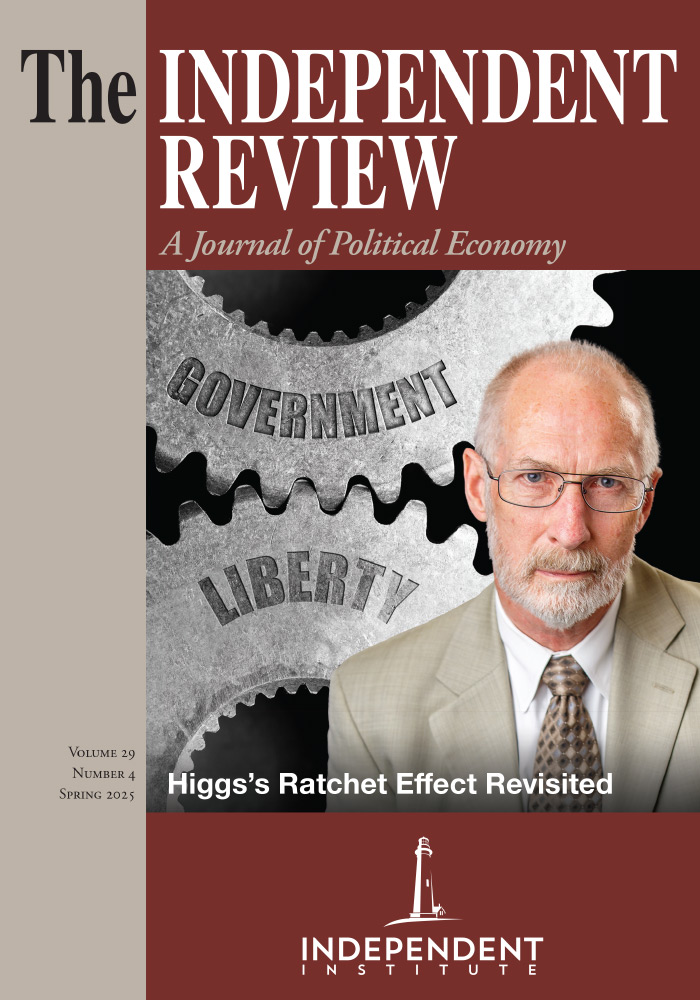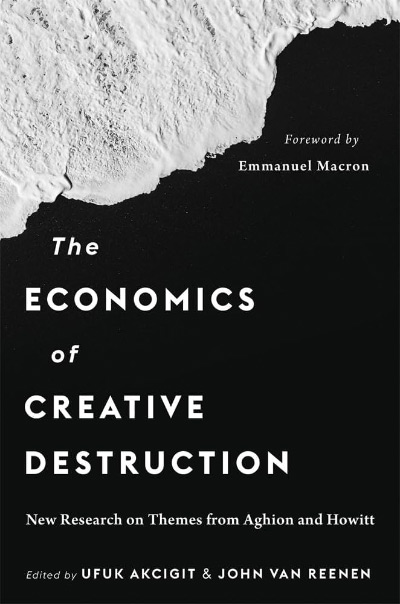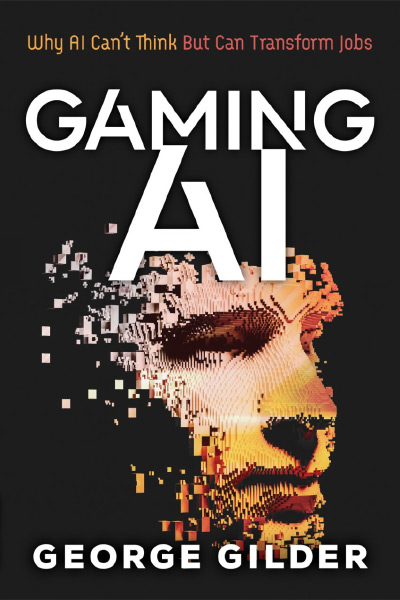As the world enters what will surely prove to be the Age of AI, understanding what the economist Joseph Schumpeter called “creative destruction” and placing that idea at the core of our vision of the world will be essential to navigating the opportunities and challenges unleashed by the return of rapid technological change. In what became his magnum opus—the book Capitalism, Socialism and Democracy (Harper and Row, 1942, p. 83)—Schumpeter described creative destruction as the “... process of industrial mutation ... that incessantly revolutionizes the economic structure from within, incessantly destroying the old one, incessantly creating a new one.” Creative destruction describes when a new innovation enters the economy—the creation—and displaces the old ways of being—the destruction. For example, Netflix enters the market, driving Blockbuster out of business. Schumpeter (p. 83) argued creative destruction was “the essential fact about capitalism” and a main driver of economic change.
As I have argued elsewhere (John T. Dalton and Andrew J. Logan, “A Vision for a Dynamic World: Reading Capitalism, Socialism and Democracy for Today,” The Independent Review 24[4] [2020]: 567–77), Schumpeter’s vision of a world characterized by creative destruction has had a lasting effect on the way economists think about economic change and remains essential for understanding the world today. Schumpeter is a favorite among economists (see, for instance, William L. Davis, Bob Figgins, David Hedengren, and Daniel B. Klein, “Economics Professors’ Favorite Economic Thinkers, Journals, and Blogs (along with Party and Policy Views),” Econ Journal Watch 8[2] [2011]: 126–46) and citations to his work outstrip even those to Keynes (see Arthur M. Diamond Jr., “Schumpeter vs. Keynes: ‘In the Long Run Not All of Us Are Dead,’” Journal of the History of Economic Thought 31[4] [2009]: 531–41 and John T. Dalton and Lillian R. Gaeto, “Schumpeter vs. Keynes Redux: ‘Still Not Dead,’” Southern Economic Journal 89[2] [2022]: 569–92). Yet, Schumpeter’s contributions to economics, which were largely written in prose in the first half of the twentieth century, proved stubbornly difficult to formalize into the mathematical models adopted by economists in the second half of the twentieth century. The result was that Schumpeter’s key insights related to innovation and creative destruction did not, as the economist Larry Summers has put it when comparing Schumpeter to Keynes (John T. Dalton and Andrew J. Logan, “The Man Who Discovered Capitalism: A Documentary on Schumpeter for Use in the Classroom,” International Review of Economics Education, 2022, 41, 100250), attract as many acolytes: “Keynes provided a framework in which large armies of people could do fairly straightforward statistical work, which then harked back to Keynes. Schumpeter’s was more a vision than a research program. In some ways, a vision is as important or may even be more important than a research program, but it employs fewer people as acolytes.”
This state of affairs in formal economic modeling remained the same until the publication of the economists Philippe Aghion and Peter Howitt’s paper “A Model of Growth through Creative Destruction” (Econometrica 60, no. 2 [1992]: 323–51). At the time of their work, there was already a growing interest in theories of economic growth, which had been ushered in by work on growth models from economists such as Robert Lucas and Paul Romer. Aghion and Howitt created a new line of research in this area of economics referred to as Schumpeterian growth models. Their model is Schumpeterian in that it formalizes and, importantly, endogenizes—the word economists use to mean an economic mechanism which occurs from forces within the model as opposed to an exogenous mechanism, such as a change of parameters to the model—Schumpeter’s key ideas of innovation and creative destruction. Aghion and Howitt’s model not only influenced the way economists think about economic growth but also a host of related questions, such as competition, international trade, inequality, and taxation, among others. In short, by standing on Schumpeter’s shoulders, Aghion and Howitt achieved the highest possible standard for formal economic models recognized by economists today: they developed a new model to shed light on a question of longstanding importance while at the same time developing a framework that could be used to study many other questions.
The Economics of Creative Destruction: New Research on Themes from Aghion and Howitt, edited by Ufuk Akcigit and John Van Reenen, is both a celebration and summary of Aghion and Howitt’s paper and the subsequent literature on Schumpeterian models developed since the paper’s publication. The editors themselves are both eminent economists who have made important contributions using Schumpeterian models. The book was put together after a conference was held in June 2021 to discuss the influence of Aghion and Howitt and the idea of creative destruction on the field of economics. The editors commissioned chapters from the conference presenters that when put together invite the reader to explore the breadth of topics which can be studied using the Aghion and Howitt approach. The book, therefore, is a book by economists for economists, and it will largely be of interest to those academic economists working in the tradition of formal Schumpeterian models.
Coming in at a little over 750 pages, the book is hefty. The book can be broken down into four parts. It begins with an introduction by the editors explaining the background and origins of the book. The editors then provide an overview of the book by summarizing and linking various chapters. Although the introduction is brief at only thirteen pages, it is a masterful display of synthesis. The editors are clearly steeped in the research questions at hand, and they do the book great justice by drawing the reader in.
The next part of the book is an overview that consists of two chapters. The first chapter is a brief three page note by the Nobel laureate Edmund Phelps. The note mistakenly links Schumpeter to exogenous growth theory by ignoring Schumpeter’s combinatorial theory of innovation set forth in The Theory of Economic Development: An Inquiry into Profits, Capital, Credit, Interest, and the Business Cycle (Harvard University Press, 1934), a view Phelps expresses elsewhere (My Journeys in Economic Theory, Columbia University Press, 2023). The note then briefly praises Aghion and Howitt before promoting Phelps’s alternative theory of innovation. It concludes by proposing a number of contemporary questions related to growth. Phelps’s own work and his books in particular can be read at great profit by a wide audience, but the readers would have been much better served by a different choice to begin the book.
The second part of the overview is a description of the Aghion and Howitt framework, which serves as the true overview of the contents of the book. This is the first chapter a PhD student or economist entering this area of research will want to read to understand the Aghion-Howitt model, its implications, and the context in which it was written at the time of publication.
The third part of the book, which covers nearly the entirety of the book’s contents, consists of eight different sections broken down by topic: competition and international trade, inequality and labor markets, growth measurement and growth decline, the environment, development and political economy, finance, taxation, and science. Each section of the book consists of chapters written by authors working in the spirit of Aghion and Howitt. The vast majority of the chapters employ in some form what economists refer to as structural models. Structural models are those that specify the workings of a theory through exact mathematical relationships, such as optimization problems to describe the behavior of households and firms. The great benefit of such models is their precision and the clean testable implications they give rise to. Aghion and Howitt employ a structural model, so it is no surprise that a book celebrating their legacy would mainly consist of structural models.
The fourth and final part of the book is the concluding chapter by Aghion and Howitt. The authors briefly reflect on the history of their model, which they describe as embedding an industrial organization model of repeated patent races into a macroeconomic framework (there is Schumpeter’s endogenous theory of innovation laid out in The Theory of Economic Development at work: Aghion and Howitt as entrepreneurs combining existing resources—two types of economic models—to creative innovation). They then describe the main ideas of the model, using microeconomic data with the framework, and how to think about policy questions.
Overall, the editors have put together an outstanding book celebrating and summarizing work written in the spirit of Aghion and Howitt. This book will serve as a standard reference and jumping off point for future research. Are you considering writing a dissertation in economics at the intersection of innovation and international trade, for example? Here, there’s this book I know on Schumpeterian models that represents the frontier of thinking in economics on that topic. Read, learn, innovate, says the dutiful adviser to the student. There will be many such students as they enter their professional careers during the Age of AI.
But, of course, Schumpeter’s insights about the role of technological change in economic development are not limited to our current moment. Indeed, his was a vision that penetrated to the heart of capitalist society and revealed its inner workings. Again, in comparison with Keynes, Peter Drucker famously wrote (“Schumpeter and Keynes,” Forbes, May 23, 1983): “No one in the interwar years was more brilliant, more clever than Keynes. Schumpeter, by contrast, appeared pedestrian—but he had wisdom. Cleverness carries the day. But wisdom endureth.” The Schumpeterian vision endures.
| Other Independent Review articles by John T. Dalton | |
| Spring 2020 | A Vision for a Dynamic World: Reading Capitalism, Socialism and Democracy for Today |
| Fall 2015 | How Adam Smith Can Change Your Life: An Unexpected Guide to Human Nature and Happiness |



















